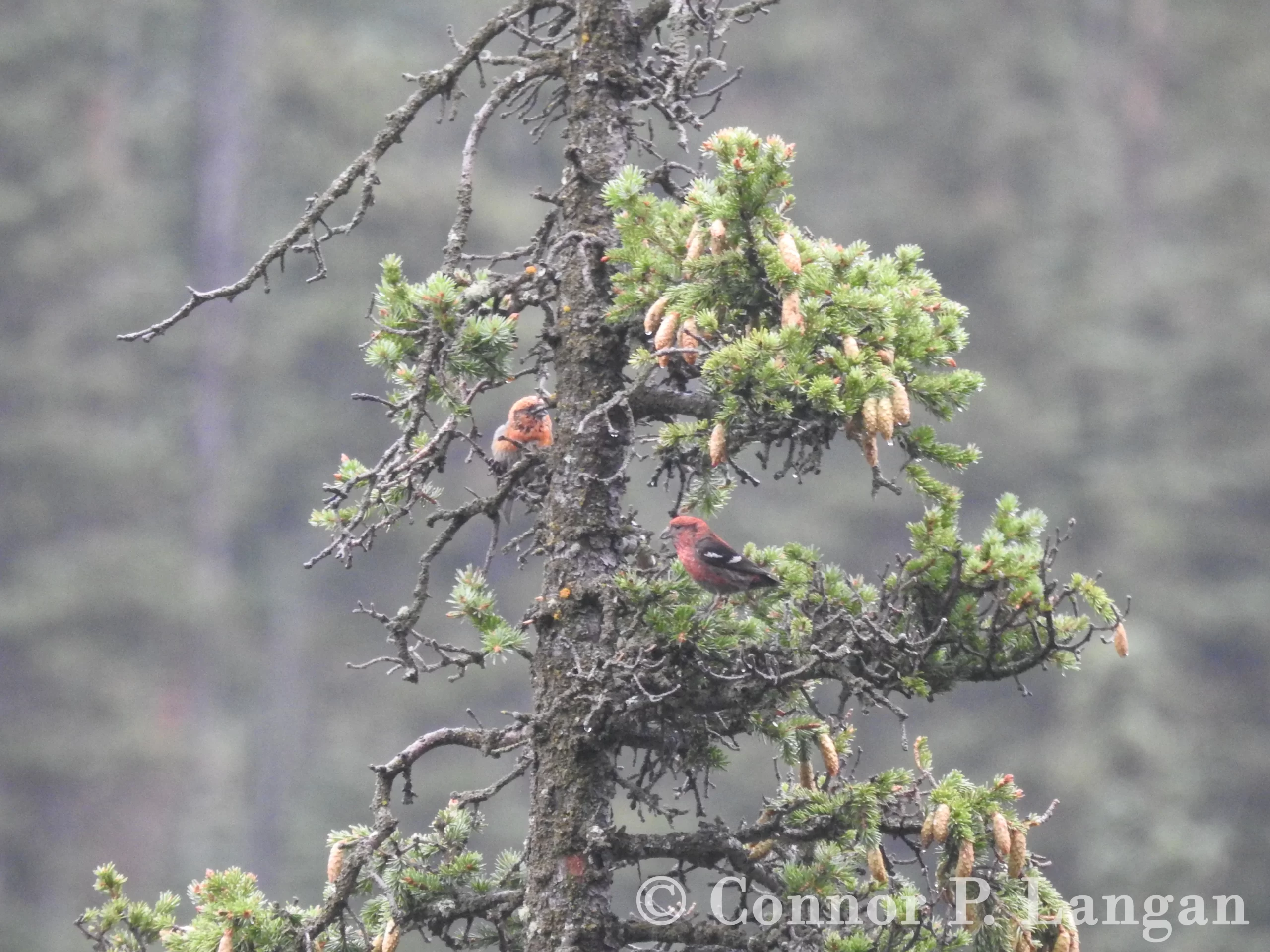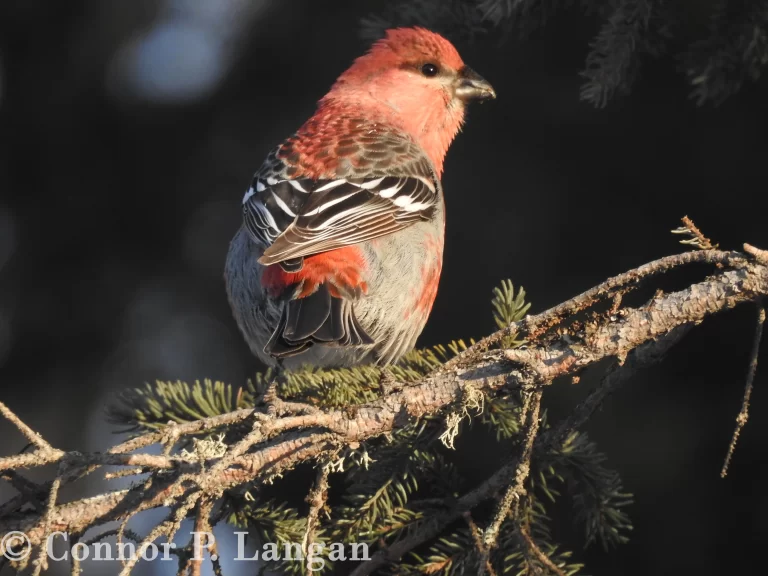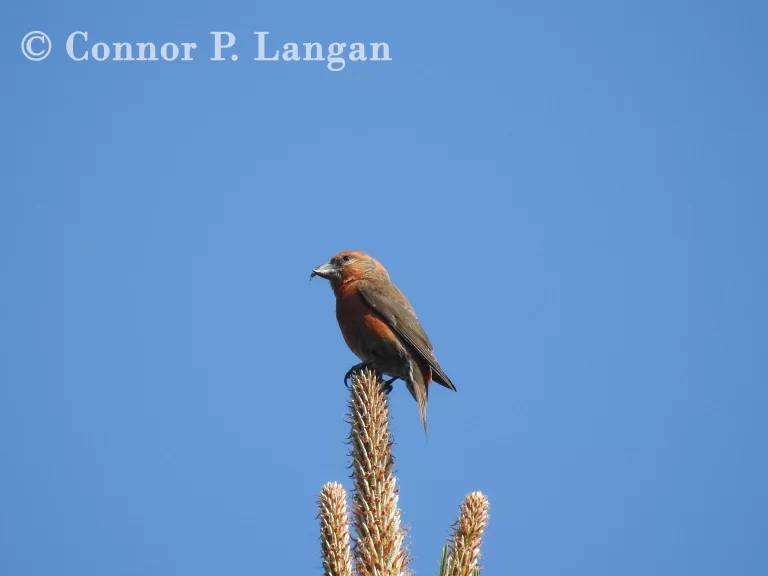Description
White-winged Crossbills have large, crossed beaks, large heads, and short, forked tails. This finch species is sexually dimorphic.
These birds measure 6 to 6.7 inches, while they may weigh 0.8 to 0.9 ounces.
Adult male White-winged Crossbills are a rosy red-pink color with white undertail coverts. Males have black wings with 2 white wingbars.
Females are a yellow-orange color with darker streaks extending down the stomach and back. Females have black wings with 2 white wingbars just as males do.
Immature males look similar to females, but they may have patches of red coloration developing in their plumage.
Juvenile White-winged Crossbills are a drab brown color overall. Young birds are barred with many stripes.
Behavior
White-winged Crossbills are social birds that gather in sizable flocks no matter the time of year. These birds usually get along well with one another, but males may be protective of their mate and the tree in which their nest is located.
When food sources are in short supply White-winged Crossbills may be hostile to one another. Males and experienced birds typically win the right to access the best foods in such instances.
Diet
White-winged Crossbills do not eat pine seeds as their Red Crossbill relatives do. Instead, these birds consume the seeds of spruce, tamarack, and fir.
The seeds of coniferous trees are the staples of a White-winged Crossbill’s diet, but these finches will also consume insects, tree buds, and bird seed from bird feeders.
Habitat
White-winged Crossbills frequent coniferous forests year-round, as their primary food source is found in such habitats. During poor cone crop years in the north, groups of White-winged Crossbills will disperse outside of their typical range to find seeds.
In irruption years, look for White-winged Crossbills in cemeteries, shelterbelts, parks, and anywhere else with old stands of spruce, tamarack, or fir trees.
Range
White-winged Crossbills are finches of the northern forests, inhabiting nearly all of Canada and Alaska throughout the year. These birds are also found year-round in the Upper Midwest, the Northeast, and the Rocky Mountains.
During irruption years, watch for White-winged Crossbills to venture into the Midwest, East Coast, and Pacific Northwest.
Breeding
White-winged Crossbills are thought to be socially monogamous by nature. These finches may practice a breeding system whereby males take care of the young after they fledge so females can go reproduce with another partner-a system known as serial polyandry.
The female and male likely collaborate to choose the nesting site, with females constructing the nest once a site is selected. Males may provide materials to the female for the nest, but they otherwise do not assist. This species nests primarily in spruce trees and selects a location near the trunk for nest placement.
Females construct cup-shaped nests made of branches, bark, and grasses. The interior of the nest is lined with soft materials like lichens, hair, and feathers.
White-winged Crossbill females produce 1 to 2 broods of eggs per year, with each clutch containing 2 to 4 eggs. It takes 14 to 16 days for the young to hatch out of eggs, and it takes at least 2 weeks for nestlings to fledge.
Backyard Birding
White-winged Crossbills like to forage in familiar environments such as coniferous trees, but in years where food is scarce, they may visit bird feeders and feed on the seeds that are offered.
These birds are not cavity nesters, so they will not nest in a birdhouse. These finches may stick around your yard if plenty of spruce or tamarack trees can be found nearby.
Population Status
White-winged Crossbill populations have been seemingly stable for the past half-century. These birds have a total population of around 80 million.



